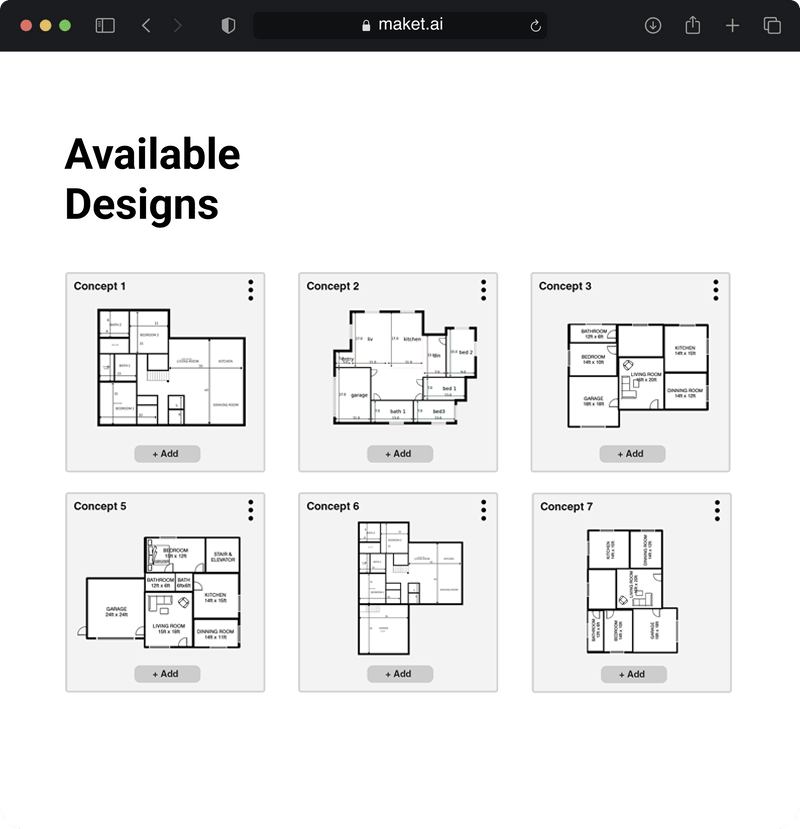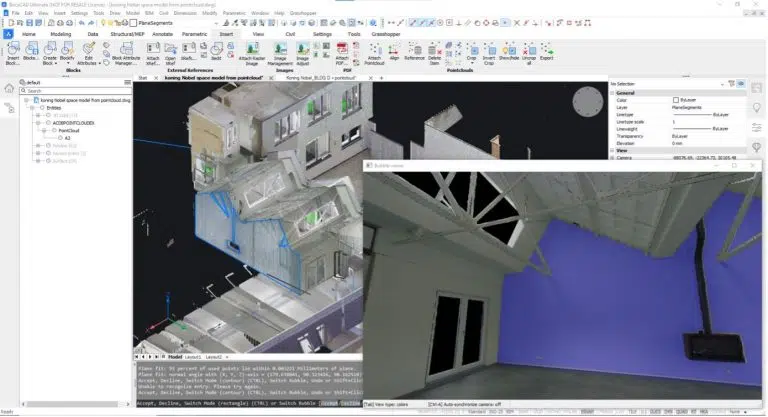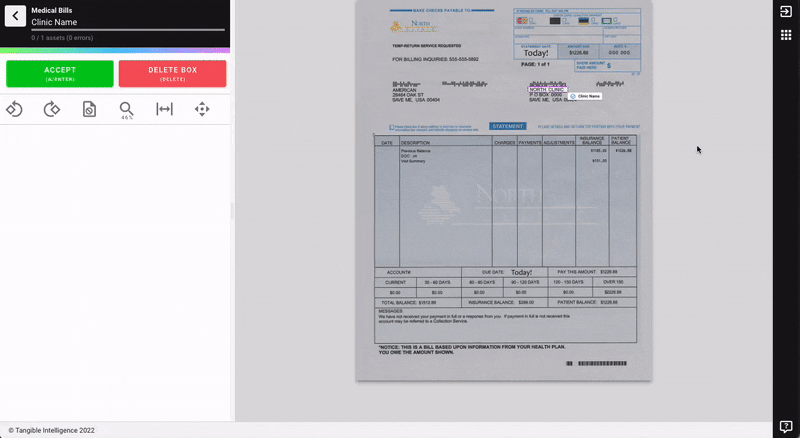The Impact of AI in the Preconstruction Project Stages
Togal.AI
|
Artificial Intelligence (AI) has revolutionized numerous industries, and the construction sector is no exception. In the preconstruction project stages, AI has emerged as a powerful tool that streamlines processes, enhances decision-making, and improves overall project outcomes.
This article explores the significant impact of AI in the preconstruction phase and how it transforms various aspects of the project lifecycle. We also cover specific AI-powered preconstruction tools like AI takeoff software.
So if you’re ready to streamline your preconstruction process, keep reading.
Is Artificial Intelligence Coming to Construction?
AI is rapidly making its way into both the construction and preconstruction phases, revolutionizing the industry. In a report by Allied Market Research, global artificial intelligence in the construction market in 2021 was valued at $496.4 million, and is forecasted to reach $8.6 billion by 2031. It’s expected to grow at a CAGR of 34.1% from 2022 to 2031.
And this is with good reason because with AI-powered tools and construction software, general contractors and estimators can:
- Optimize construction processes
- Automate routine tasks like measuring the materials in a drawing.
- Reduce administrative processes such as data entry and contract management.
- Free up time and focus on more complex and high-value tasks.
AI in Preconstruction: Role of Artificial Intelligence for Each Preconstruction Project Stage
The preconstruction phase plays a vital role in project success by setting the foundation for subsequent stages. It involves comprehensive planning, cost estimation, risk assessment, and collaboration among stakeholders. With the integration of AI in preconstruction, this critical phase has become more efficient, accurate, and insightful.
Before diving into the impact of AI, here are some of the key stages involved in preconstruction.
Pre-Design
This stage focuses on the initial planning and conceptualization of the project. It involves defining project goals, conducting feasibility studies, and outlining the project's scope. During this stage, preliminary designs and layouts are developed to visualize the project concept.
Potential Applications of Artificial Intelligence in Pre-Design
Feasibility Studies
AI algorithms can analyze large datasets and conduct feasibility studies more efficiently. They can assess various factors such as financial data, environmental impact, and market data to determine if the project is viable.
Virtual Reality Visualization

AI-powered virtual reality (VR) technology can create immersive visualizations of the project concept. This allows stakeholders to experience and evaluate the design before it is physically constructed, facilitating better decision-making and collaboration.
Design Development
In this stage, the project's design is further refined and developed. Architects, engineers, and other professionals work together to create detailed drawings, specifications, and technical documentation. The design development stage aims to translate the conceptual ideas into tangible plans that meet functional requirements and regulatory standards.
Potential Applications of Artificial Intelligence in Design Development
Generative Design
AI algorithms can generate design alternatives by exploring numerous permutations and considering multiple constraints. This helps designers explore innovative solutions and optimize designs based on predefined criteria.
Building Information Modeling (BIM)
AI-powered BIM software can analyze and integrate design data from multiple disciplines (architectural, structural, and mechanical), detecting clashes and inconsistencies in real time. This enhances coordination and collaboration among architects, engineers, and contractors during the design development stage.
Material Selection and Optimization
AI algorithms can analyze material properties, performance data, and cost factors to recommend optimal material selections for specific design requirements. This helps in enhancing sustainability, durability, and cost-effectiveness of the project.
Example of Artificial Intelligence in Design Development
Below is a picture of a AI-powered tool, Maket.AI, used for generating architectural plans.

Below is another example of an AI-powered tool applicable for the Design Development Phase, Bricsys.

Below is a screenshot of CodeComply.AI automatically generating a list of non-compliant items, which allows users to verify compliance throughout the building.

Construction Documents
During this stage, the design development is converted into comprehensive construction documents. These documents include contracts, and detailed architectural, structural, electrical, and mechanical plans, along with specifications for materials, finishes, and construction techniques. Construction documents serve as the basis for contractors to bid on the project and for obtaining necessary permits.
Potential Applications of Artificial Intelligence in Construction Documents
Extracting Data From Construction Documents
AI-based tools can be used to automate the extraction of data from construction documents such as contracts, specifications, and drawings. This can save time and reduce human errors often caused by manual data entry.
Analyzing Project Requirements
AI-based tools can use natural language processing (NLP) to analyze project requirements and create a detailed project scope document. This can help ensure that all project requirements are accurately captured and understood.
Example of Artificial Intelligence in Construction Documents
Picture below shows AI-driven data entry tool, AutoExtract.AI that can be used to automate the process of extracting data from construction documents such as contracts, specifications, and drawings.

Bidding and Negotiation
In this stage, the project owner invites contractors to submit bids based on the construction documents. Contractors review the project requirements and specifications, estimate the costs, and submit their proposals. The owner evaluates the bids and negotiates with contractors to finalize the terms and conditions of the construction contract.
Potential Applications of Artificial Intelligence in Bidding and Negotiation
AI-Powered Takeoff
Instead of spending weeks or months doing takeoff manually or with on-premise software, why not automate it with an AI-powered takeoff solution like Togal.AI? With Togal.AI, estimators can process takeoffs in less than a minute with up to 98% accuracy. This can save estimators and general contractors time, enable them to focus on value-engineering tasks, and participate in more bids.
Automated Bid Evaluation
AI can automate the evaluation of contractor bids by analyzing various parameters such as cost, schedule, qualifications, and past performance. This streamlines the bid evaluation process, saves time, and improves objectivity.
Natural Language Processing for Contract Analysis
AI-powered natural language processing (NLP) techniques can analyze and extract key information from complex contract documents. It enables efficient contract review and helps identify potential risks, obligations, and opportunities for negotiation.
Examples of Artificial Intelligence in Bidding and Negotiation
Below is a 57 second video of AI takeoff solution, Togal.AI, which helps estimators complete takeoffs in just under a minute with up to 98% accuracy. This helps them boost productivity and participate in more bids, which increases their chances of getting awarded projects.
Permitting and Approvals
Before construction can begin, various permits and approvals must be obtained from relevant authorities. This stage involves submitting the construction documents to obtain permits for building, zoning, environmental compliance, and other regulatory requirements. The project team works closely with the authorities to address any concerns or modifications needed for approval.
Potential Applications of Artificial Intelligence in Permitting and Approvals
Overall, AI could be used in this phase to validate building code compliance and streamline the building permit process.
Automated Compliance Checking
AI could automate the compliance checking process by comparing construction documents against relevant building codes, zoning regulations, and environmental requirements. It helps identify any non-compliance issues and ensures that the submitted documents meet the necessary standards.
Machine Learning for Predicting Approval Timeframes
AI algorithms trained on historical permitting data could predict the timeframes for obtaining permits and approvals. This helps project teams in planning and managing project schedules more effectively.
Finalize Preconstruction
The final stage of preconstruction involves tying up loose ends and preparing for the construction phase. This includes finalizing contracts, securing financing, establishing project schedules, and mobilizing resources. The project team ensures that all necessary preparations are in place to smoothly transition from preconstruction to actual construction activities.
Role of Artificial Intelligence in Finalizing Preconstruction
Contract Management and Review
AI-powered contract management systems such as Kira Systems can assist in organizing and reviewing project contracts, ensuring compliance with legal and regulatory requirements. It helps in tracking key milestones, monitoring contract changes, and minimizing contractual risks.
Financial Analysis and Risk Assessment
AI algorithms could analyze financial data, project budgets, and market trends to provide accurate financial projections and risk assessments. This enables project teams to make data-driven decisions regarding financing options and risk mitigation strategies.
Resource Optimization and Scheduling
AI-based scheduling tools could optimize project schedules by considering available resources, constraints, and project requirements. This ensures efficient resource allocation, minimizes scheduling conflicts, and maximizes productivity during the construction phase.
Artificial Intelligence (AI) and Machine Learning for Material Takeoff and Cost Estimation
Material takeoff and cost estimation continue to be some of the most complex and time-consuming parts of preconstruction. They’re definitely areas that will benefit greatly from the adoption of AI.
Here are some of the challenges in material takeoff and cost estimation, along with a description of how AI can solve them:
1. Inaccuracy
Manual takeoffs are prone to human error that can lead to project delays and unexpected costs in the long run. With Togal.AI, complete takeoffs with up to 98% accuracy. Being automated, you can also avoid manual data entry mistakes and other potential human errors with AI.
2. Lack of Speed
Material takeoff and cost estimation continues to be some of the most laborious parts of preconstruction, sometimes taking weeks or months to complete. But with Togal.AI, estimators can now process takeoffs in just under a minute, boosting productivity and enabling focus on value-engineering and scoping.
3. Lack of Collaboration Between Stakeholders
Takeoffs done manually or with an on-premise takeoff make it difficult to collaborate with team members. But with Togal.AI’s cloud-based collaboration, estimators can work with multiple team members on any device, anytime and anywhere as long as there’s internet access.
4. Lack of “Real” Automation
Many digital takeoff software continue to require a lot of user input and intervention which limits the efficiency and scalability of the process. In short, they are still rollers and rulers with a mouse.
But with Togal.AI, estimators leverage machine learning algorithms that can learn from data and improve over time the more the team uses it.
For example, if the team of estimators labels a certain shape as “toilet”, Togal.AI will remember it and classify similar shapes as a “toilet” in the future, saving more and more time. This makes Togal.AI a more intelligent, adaptable, and reliable solution than manual or outdated digital methods.
Future Trends of AI in Construction
The future of AI in preconstruction looks promising. As AI technologies continue to advance, we can expect more sophisticated algorithms, better integration with Building Information Modeling (BIM) systems, and improved predictive capabilities.
These advancements will further streamline processes, increase automation, and optimize resource allocation in preconstruction. Even recently, for the first time ever, AI takeoff solution Togal.AI integrated with ChatGPT so estimators can talk to their construction plans for the first time ever. Construction professionals can use semantic search functionality to find relevant information across thousands of pages of plans, contracts, specification books, schedules and budgets in seconds.
This only shows that the future of AI in preconstruction has boundless potential. It continuously evolves and enhances data analysis, collaboration, project planning, risk assessment, design optimization, material takeoff, and cost estimation.
Explore how AI helps estimators and general contractors get significant advantages in terms of efficiency and accuracy of material takeoff and cost estimation. Try Togal, book a custom demo, or get Togal.AI today.
